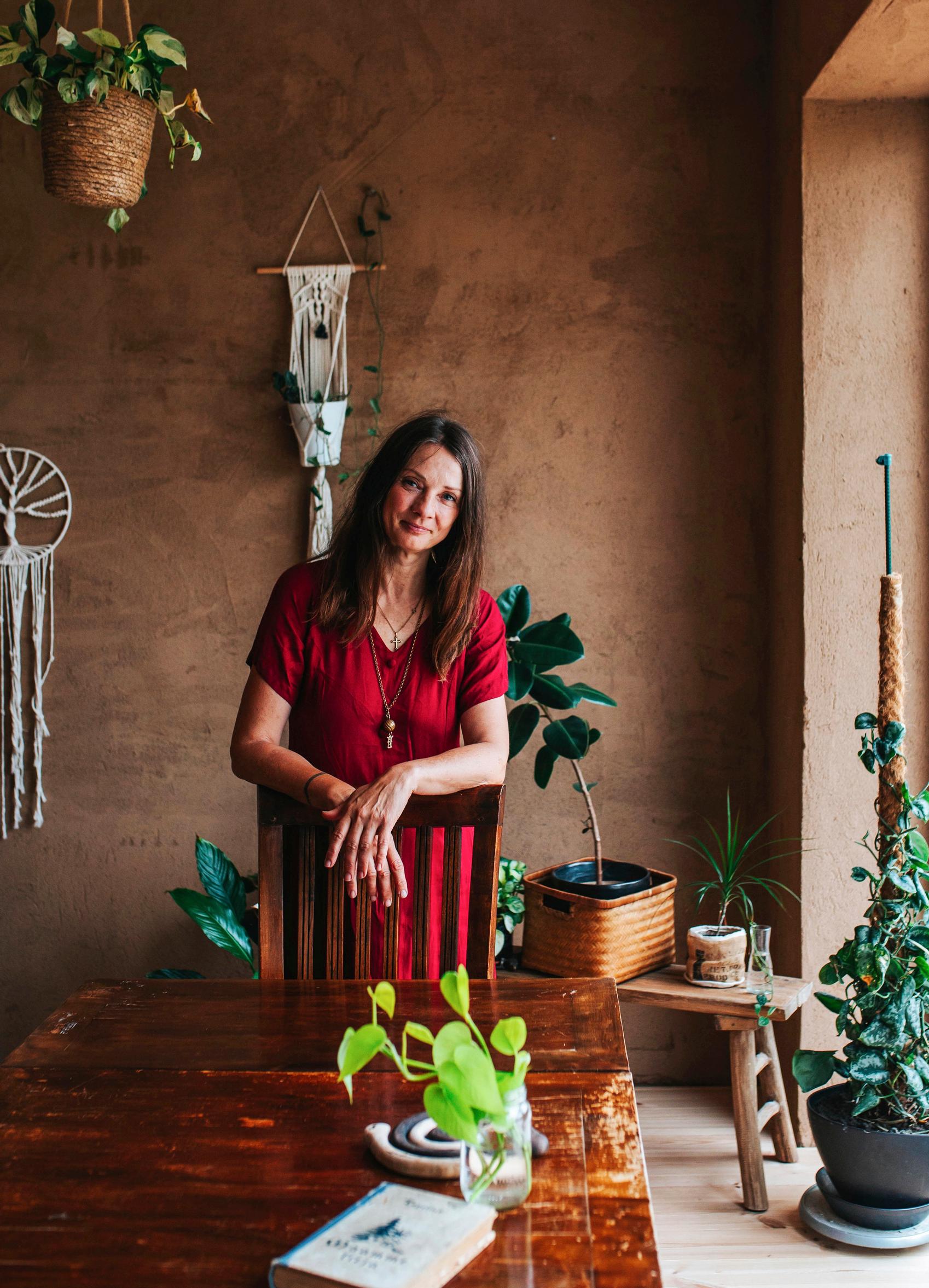
Kirsi Salo lives in an eco-house she designed herself—the dream of a self-sufficient life proved worth pursuing
Former news anchor Kirsi Salo lives far from city life in an eco-house she designed herself. The newly completed house is the first in the area, a village founded by Kirsi in Juva, Finland.

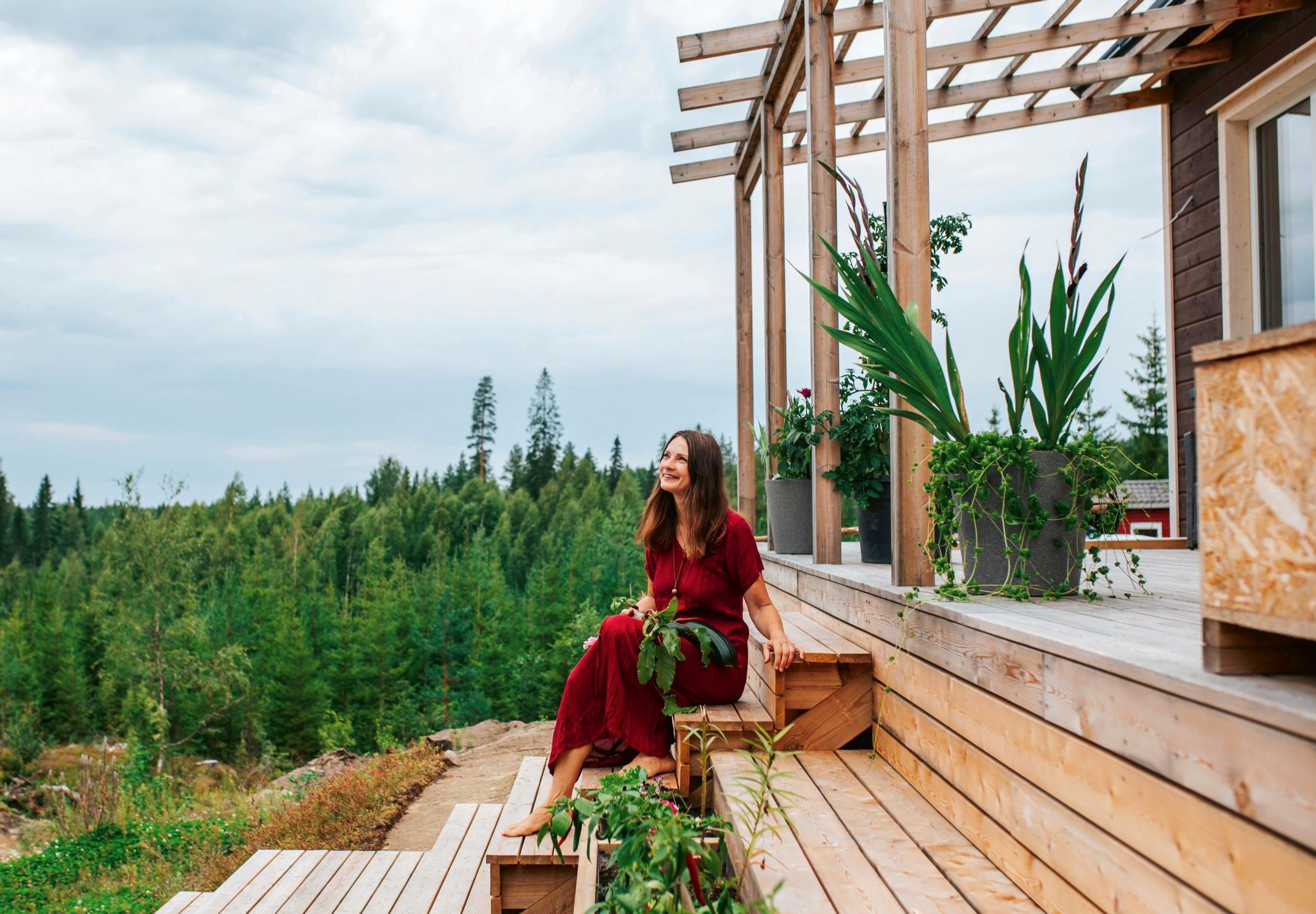
Traveling takes a while as the road winds through the forest. Eventually, a sign posted at the intersection directs you to Onnellisten kylä ("Village of the happy") and a house perched on a hilltop. The house belongs to Kirsi Salo. From the outside, the building looks rather ordinary, but on the inside, it’s anything but. Another similar-looking home stands a bit farther away. But what exactly makes Kirsi’s house so special?
The location of the lot convinced Kirsi, 56, from the very first look. The untouched forest property was found in Southern Savonia, far from the hustle and bustle of cities, neon lights, and traffic. To the north, the lot is bordered by game-rich forest; to the south, there’s a fish-filled lake. The south-facing slope provided an excellent spot for the house. In 2021, Kirsi established a village here in the quiet countryside for people who, like her, want to live in harmony with nature. So far, three households have built homes in the village.
A year after laying the cornerstone, the former news anchor and TV host is living a life that suits her, largely self-sufficient. A couple of generations ago, her rural lifestyle wouldn’t have raised any eyebrows. But in the digital age, marked by wars and climate change, it has sparked major interest. Is it really possible to generate enough electricity and food for oneself and live with no bills?

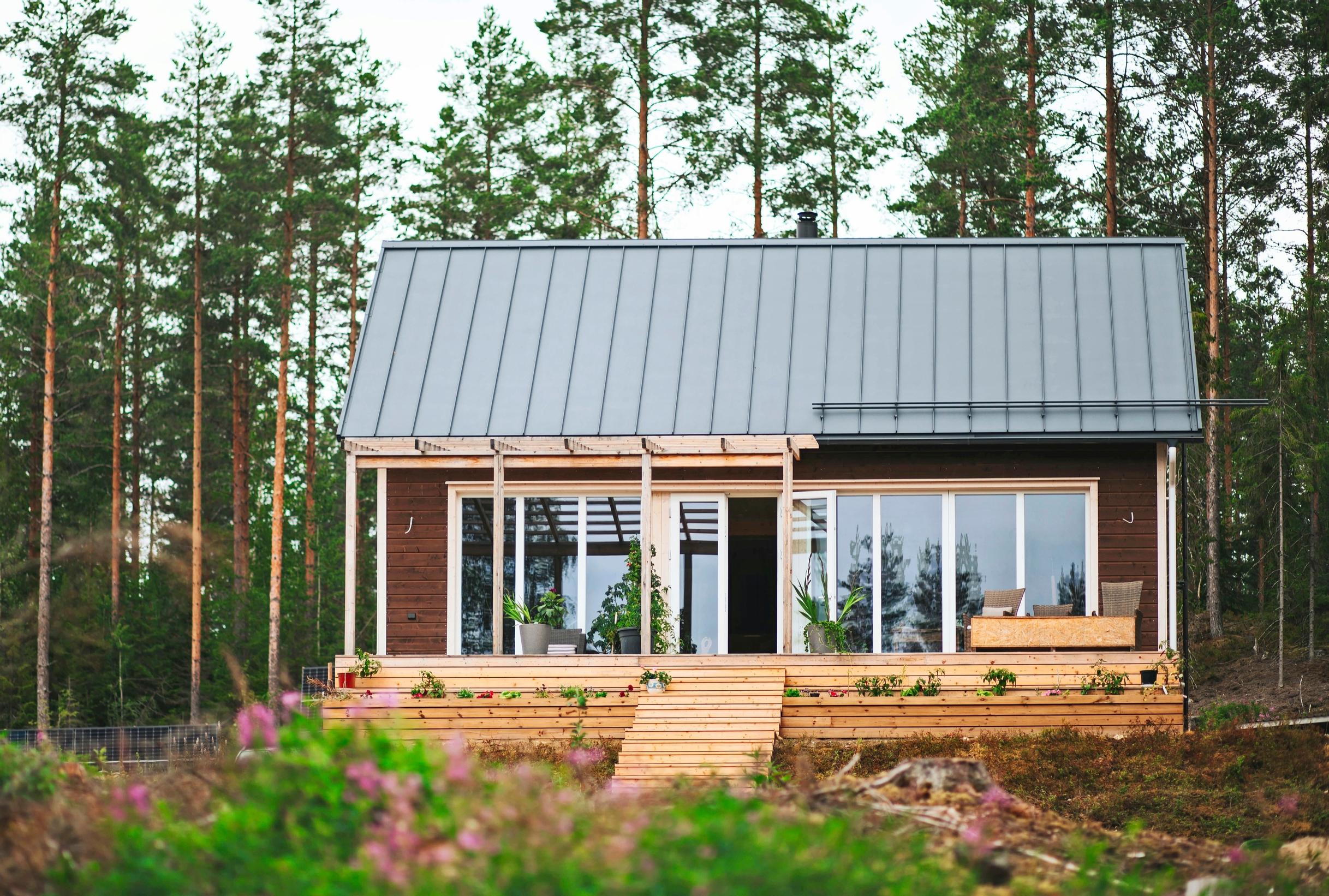

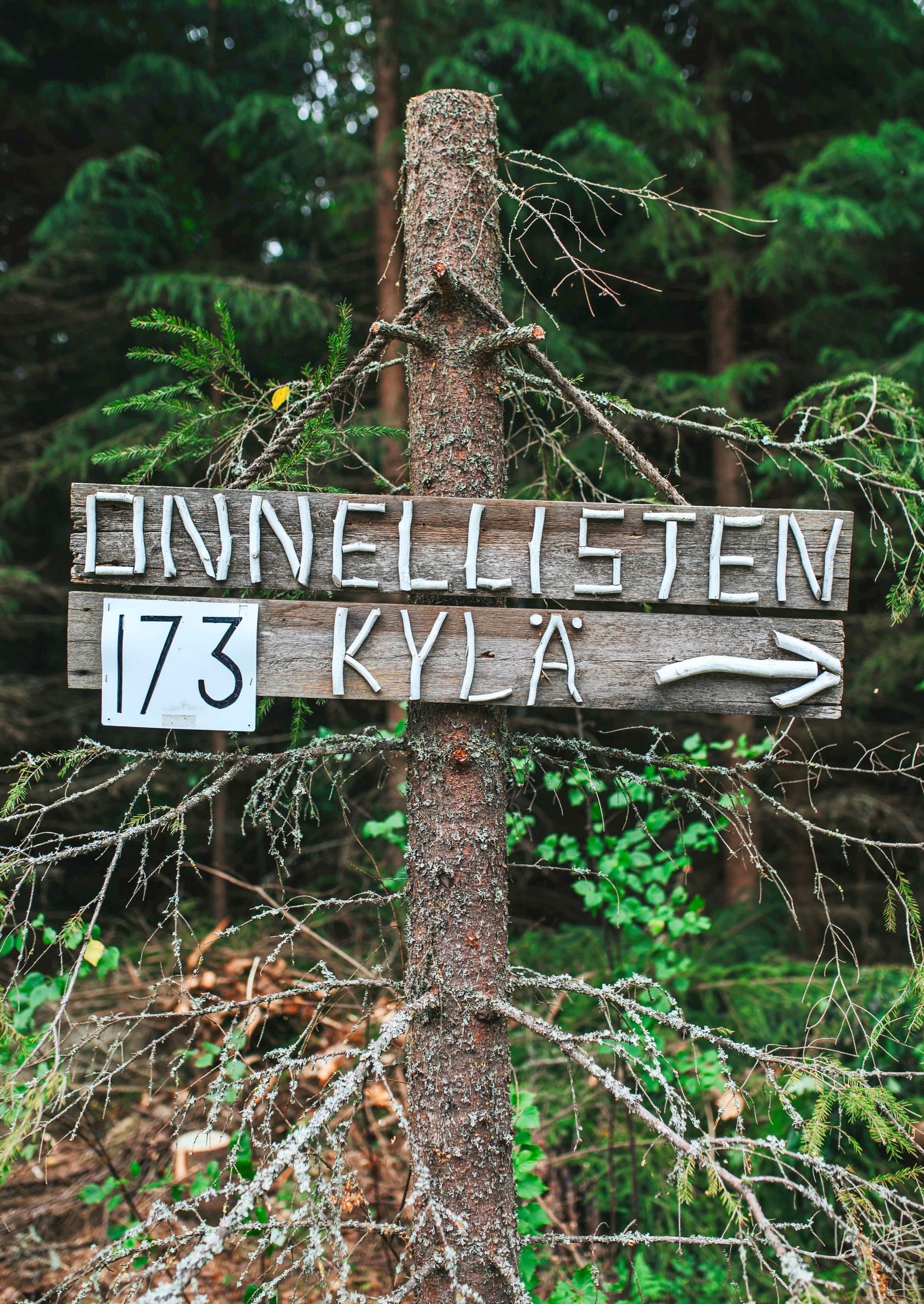
When you arrive, your gaze is drawn to the backyard solar panel setup. Its location is no coincidence. The panels face south at precisely the right angle for the sun’s rays to reach them year-round. Calculations have proven to be spot on, as the panels have provided electricity since January, when Kirsi moved into the house. They function regardless of the weather.
“When snow falls on the panels, I put on my boots and clear the snow in just a few minutes,” Kirsi tells us.
In order for the sun to reach the solar panels, trees had to be felled in front of them. That explains the somewhat rough view stretching from the home’s terrace toward the lake. A chainsaw brought some trees down, and later a storm raged through the area with visible consequences. In the countryside, natural events shape the environment far differently than in the city.
Near the solar panels is another important piece of the house’s technical solution: a ring well. A drilled well would have required too much electricity. Kirsi’s 80-square-meter home uses about three kilowatt-hours of electricity per day for the freezer, fridge, and the cat’s drinking fountain, which apparently consumes a surprising amount of power. Kirsi collects rainwater for watering her plants.
There’s no municipal infrastructure in the village.
“The municipality of Juva has helped us in many ways, but from the start it was clear that they would not build infrastructure out here,” Kirsi says.
In addition to water and electricity, residents must also produce their own heat. This is done by cleverly combining old and new methods—more on that in a moment.
Just three daily firings in the stove during cooking are enough to heat the house.

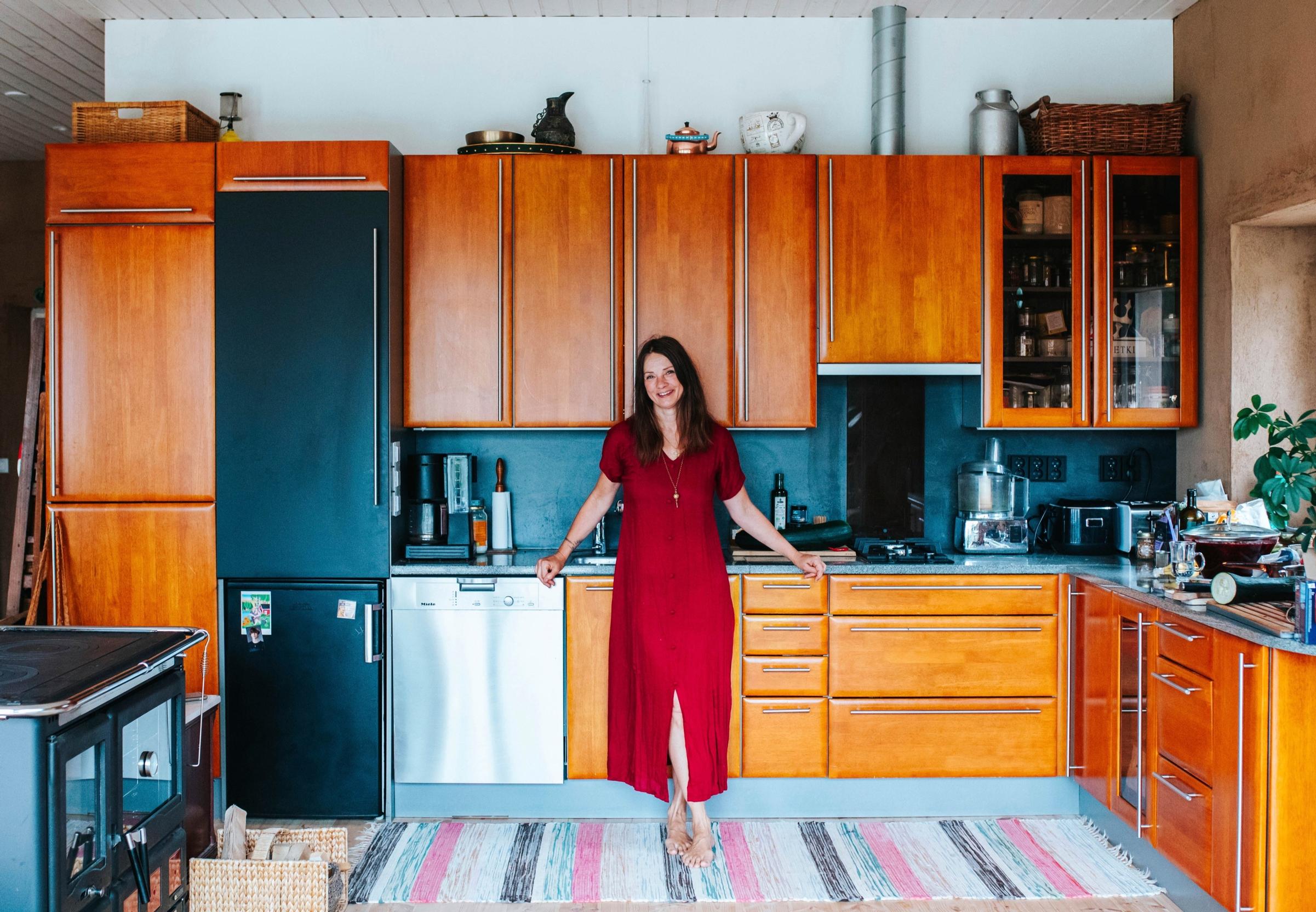

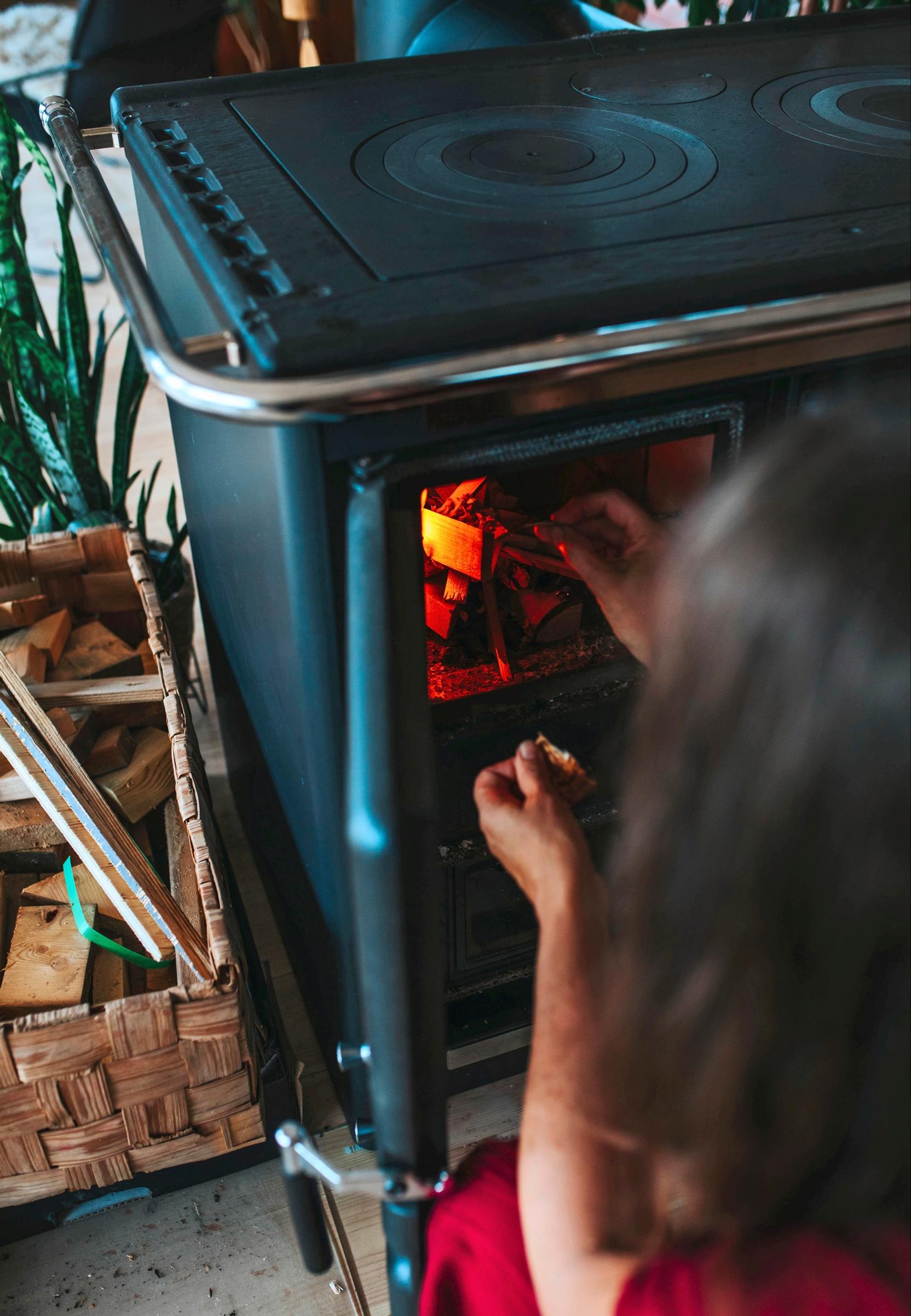

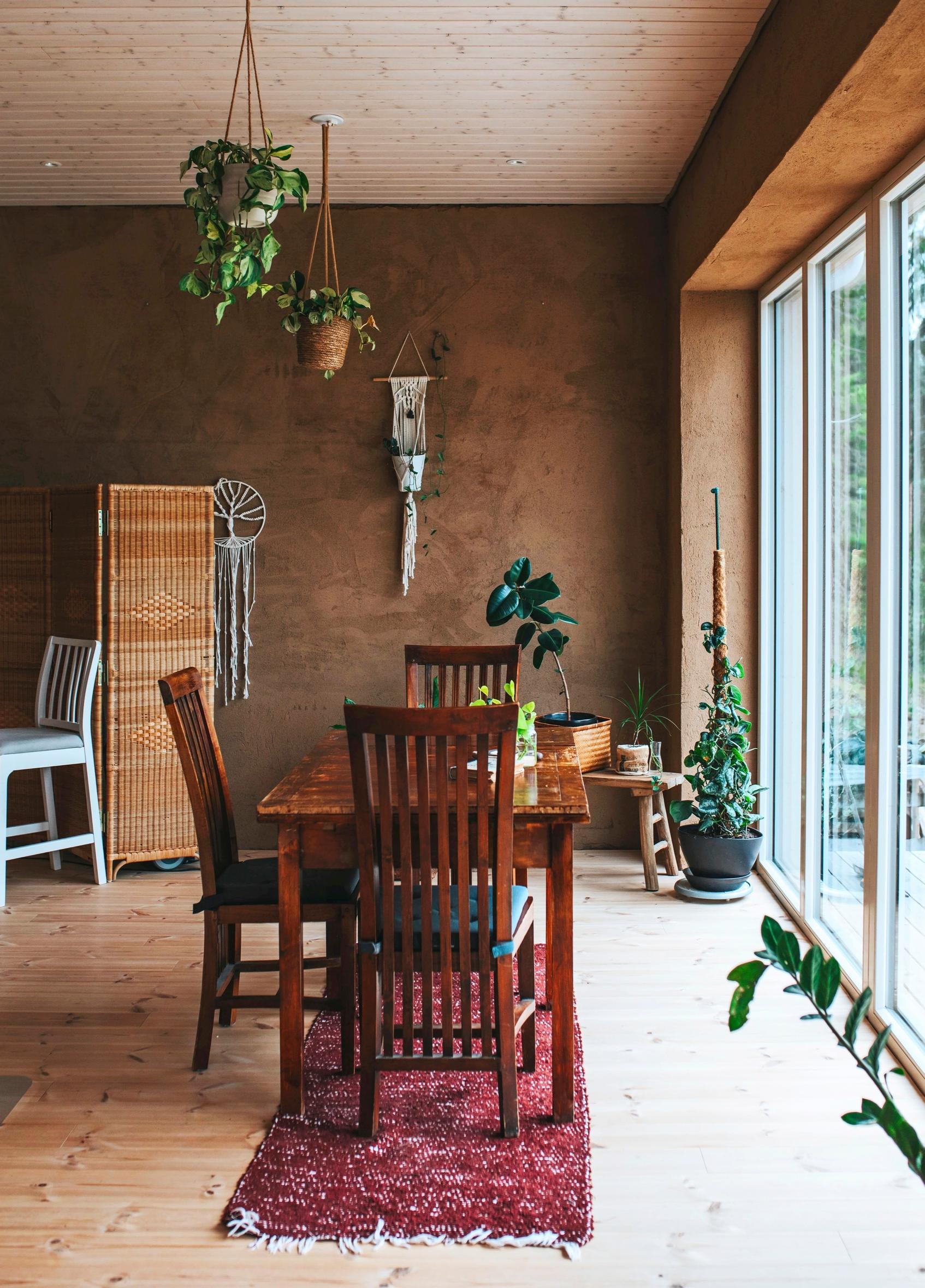
Many things were unfinished when Kirsi moved into the house, and many will remain that way for a long time. As the only occupant, she wants to see how the house feels to her and how best to settle in. For instance, she hasn’t built a wall to separate the bedroom from the living room; instead she left the space open. At first, she placed the bed to face the lake through the large living room windows.
“But in winter it turned pitch-black outside, and I couldn’t see a thing. When I turned the bed to the west, I could see spectacular sunsets, stars, and even the northern lights through the window. It’s like being in the wilderness of Lapland here. You can see forest for miles. The nearest neighbor in Juva is two kilometers away.
In the countryside, far from light pollution, you can watch the northern lights right from your bed. No wonder this intrigues other people as well. Kirsi has opened her home to the public twice on open-house days. Dozens of people showed up, filling the roadside with cars.
“Self-sufficiency and a bill-free life fascinate a lot of people,” she observes.
After more than half a year of living here, she’d received about five bills related to the house, but not a single monthly bill. It may sound unbelievable. Kirsi is happy to share her experiences and pass on the knowledge she has about home technology, but even though this is the countryside, where visits aren’t always arranged in advance, she’d prefer that people didn’t simply turn up unannounced, as they far too often do. It’s important to respect the peace of both your own and others’ homes.

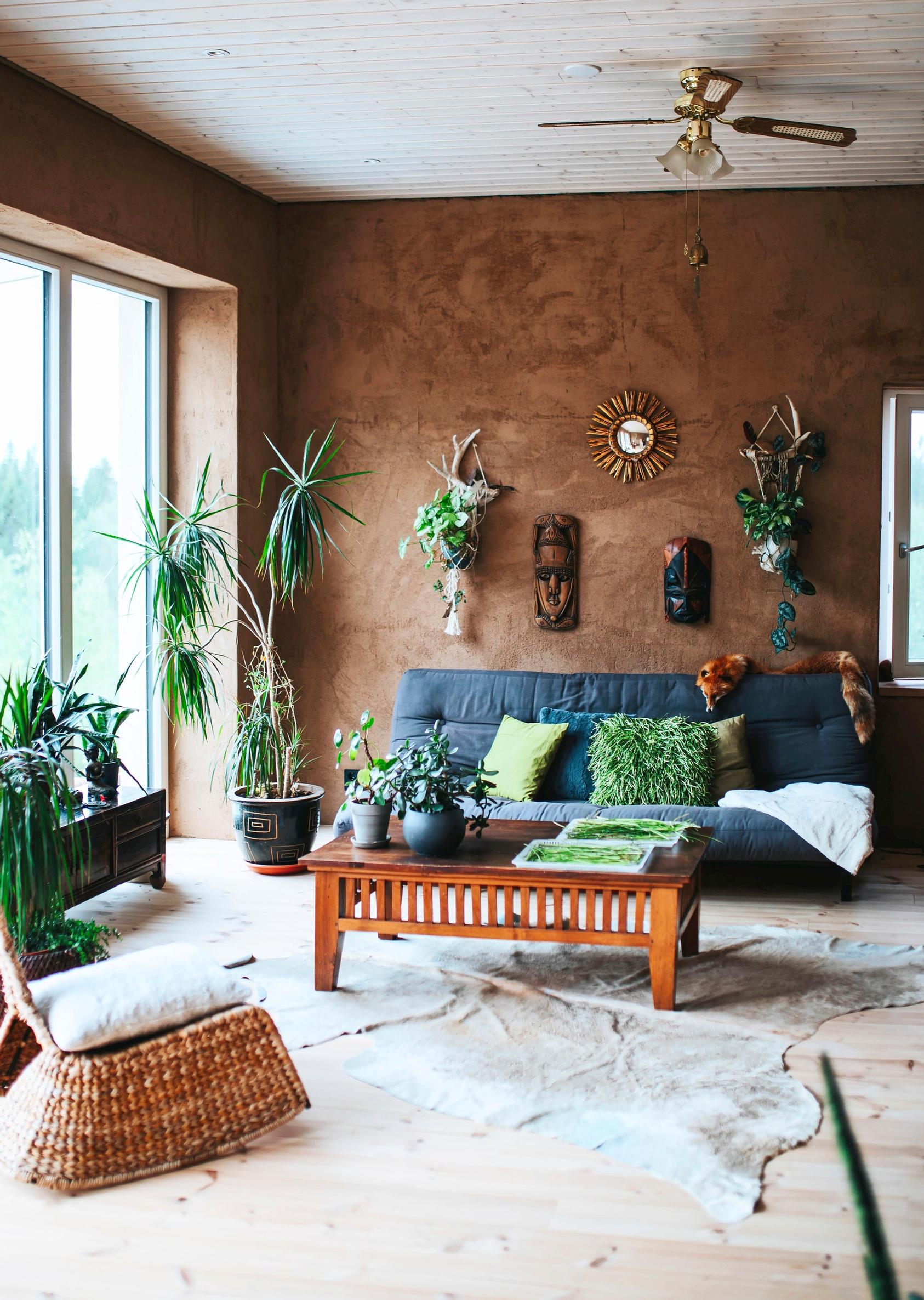

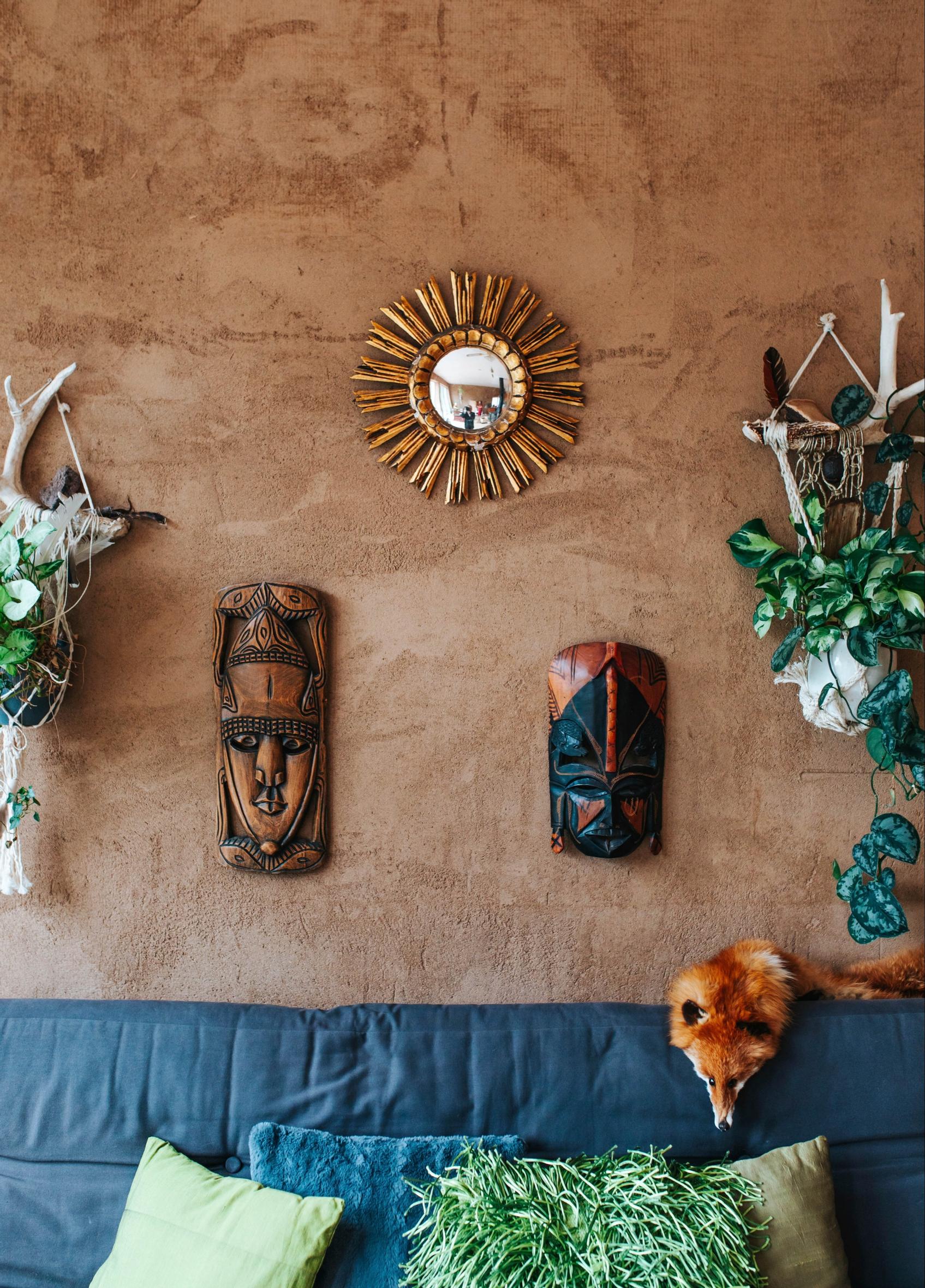

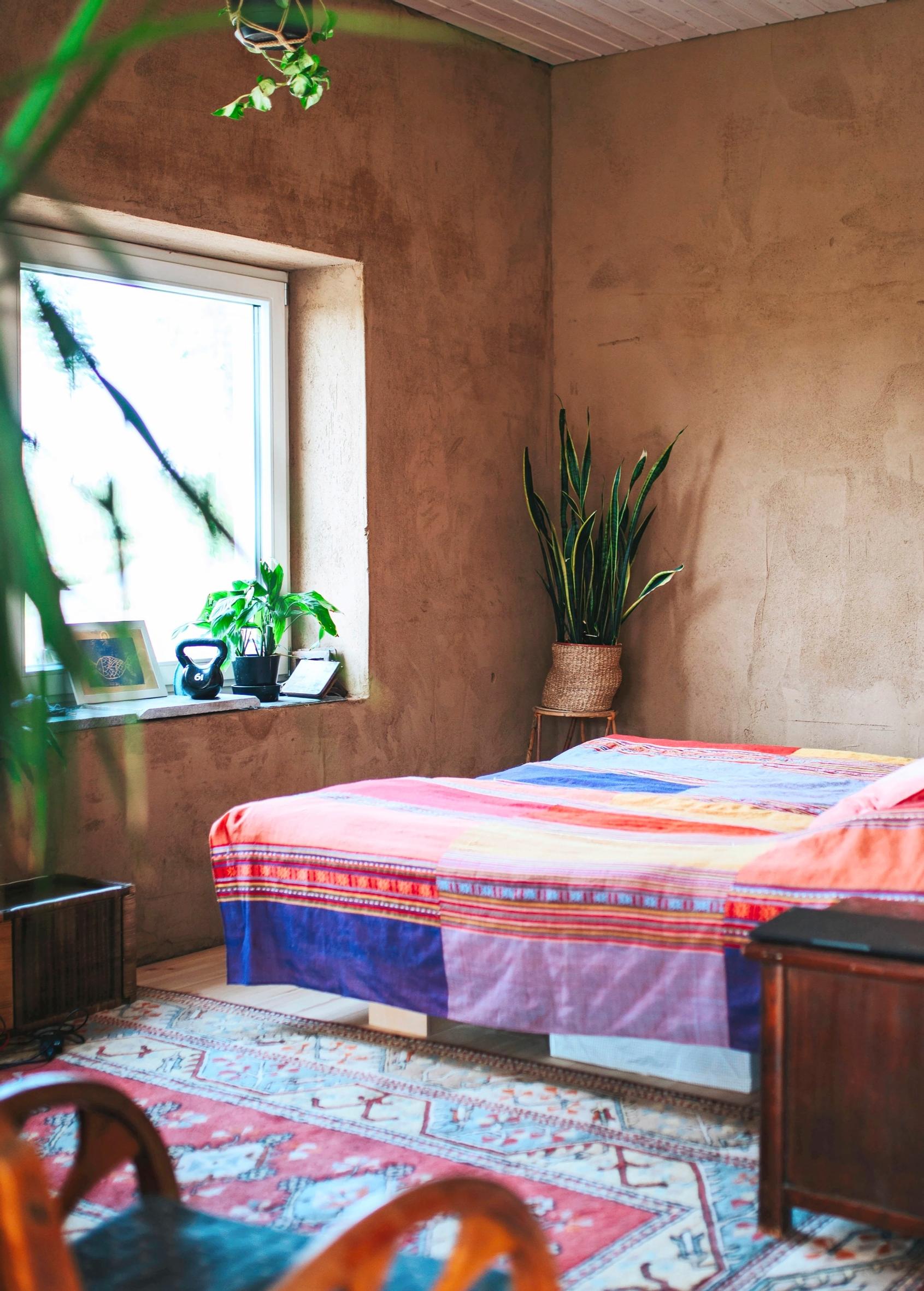
Kirsi’s home has a peaceful atmosphere. It’s very quiet. The lady of the house is busy making juice. The blackcurrant crop has ripened, and Kirsi has received berries from a friend in Juva. Local custom is that neighbors and friends generously share what they have. That, Kirsi reminds us, is also part of self-sufficiency: you don’t have to own everything yourself.
The juice is ready and will soon be bottled, then stored in the outdoor cellar. Kirsi can keep plenty there: potatoes, carrots, beets, and jams. She harvests from her own yard. Before Kirsi leads us outside to see her raised beds, she shows us around the house.
The most striking decorative element is the walls. They glow in a warm, earthy brown tone. The natural aspect is literal: the walls are built from straw elements made by EcoCocon in Lithuania, without glue or plastic. The plaster is clay. The uneven application practically invites you to run your fingers over it.
The advanced home technology isn’t immediately visible. No radiators, no fireplace, no air-source heat pump whirring near the ceiling. Only the wood stove suggests there’s something unusual about the technology. A flue built by HormiProffa carries water from the technical room—located behind the bathroom—to the chimney. The water-circulating chimney stores the stove’s heat in the water. For heating the house, it’s enough for Kirsi to light the stove three times a day while cooking.
At first, they the plan was to try gravity ventilation, but they decided against it.
“They installed a mechanical ventilation system here that doesn’t make any noise. It also purifies the air and recovers heat efficiently. In summer, it cools the house.”
The ventilation connects to a 160 meter long geothermal loop buried at a depth of one and a half meters in the yard. It hasn’t been turned on yet, so Kirsi doesn’t have first-hand experience with it.
“I also wanted underfloor heating so the house wouldn’t be like a prison that you can never leave for any length of time. With it, I can keep the house at minimal heat for a while. We also have a mutual assistance agreement among other village residents. We can swing by and light someone else’s stove if they’re gone for a while.”
When it comes to home technology, Kirsi is self-sufficient. The same idea applies to food production. The surrounding forest, the sparkling lake in front of the house, and her own yard supply most of her needs—there’s also a friendly clucking coming from the back of the yard.

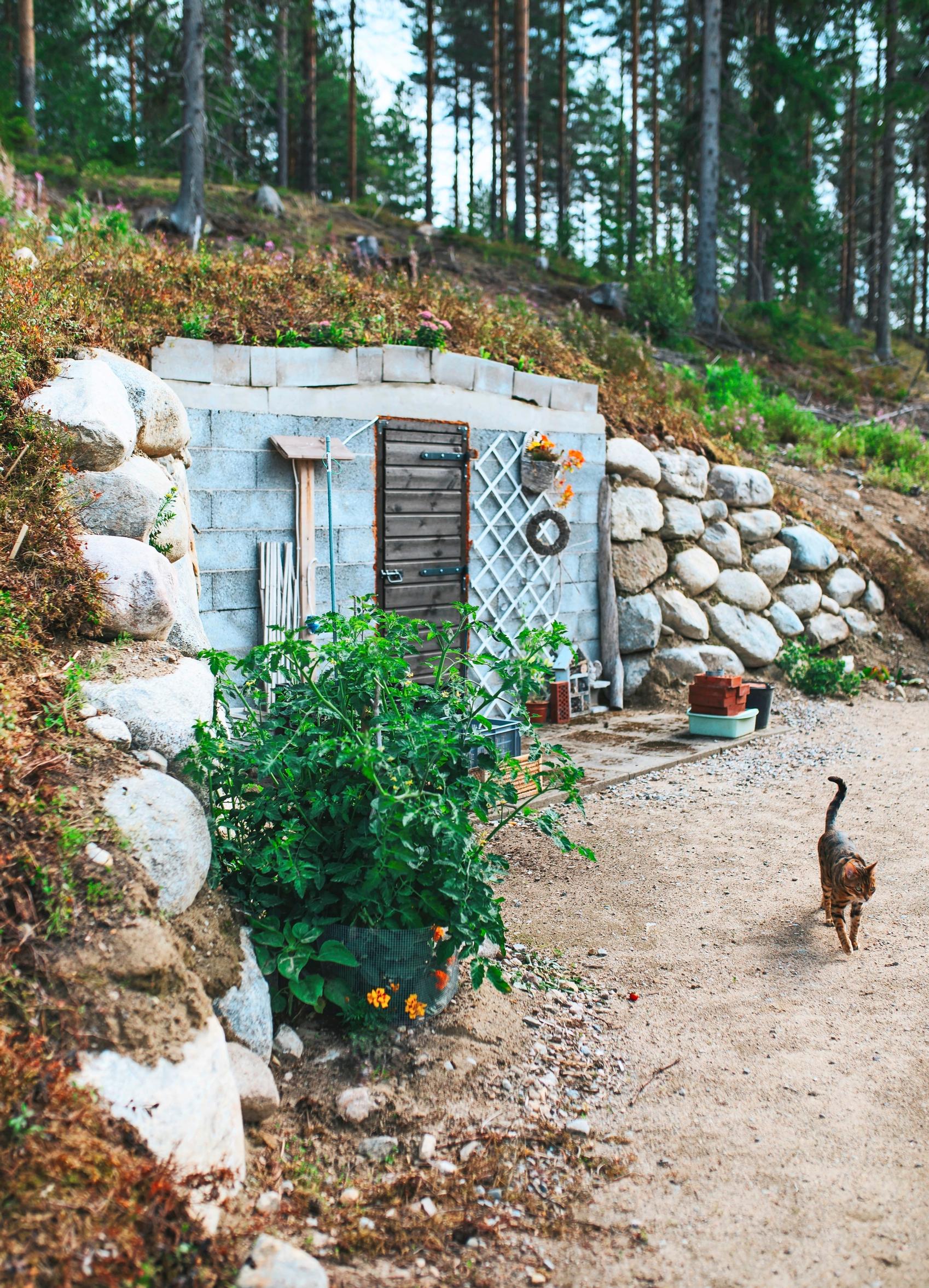

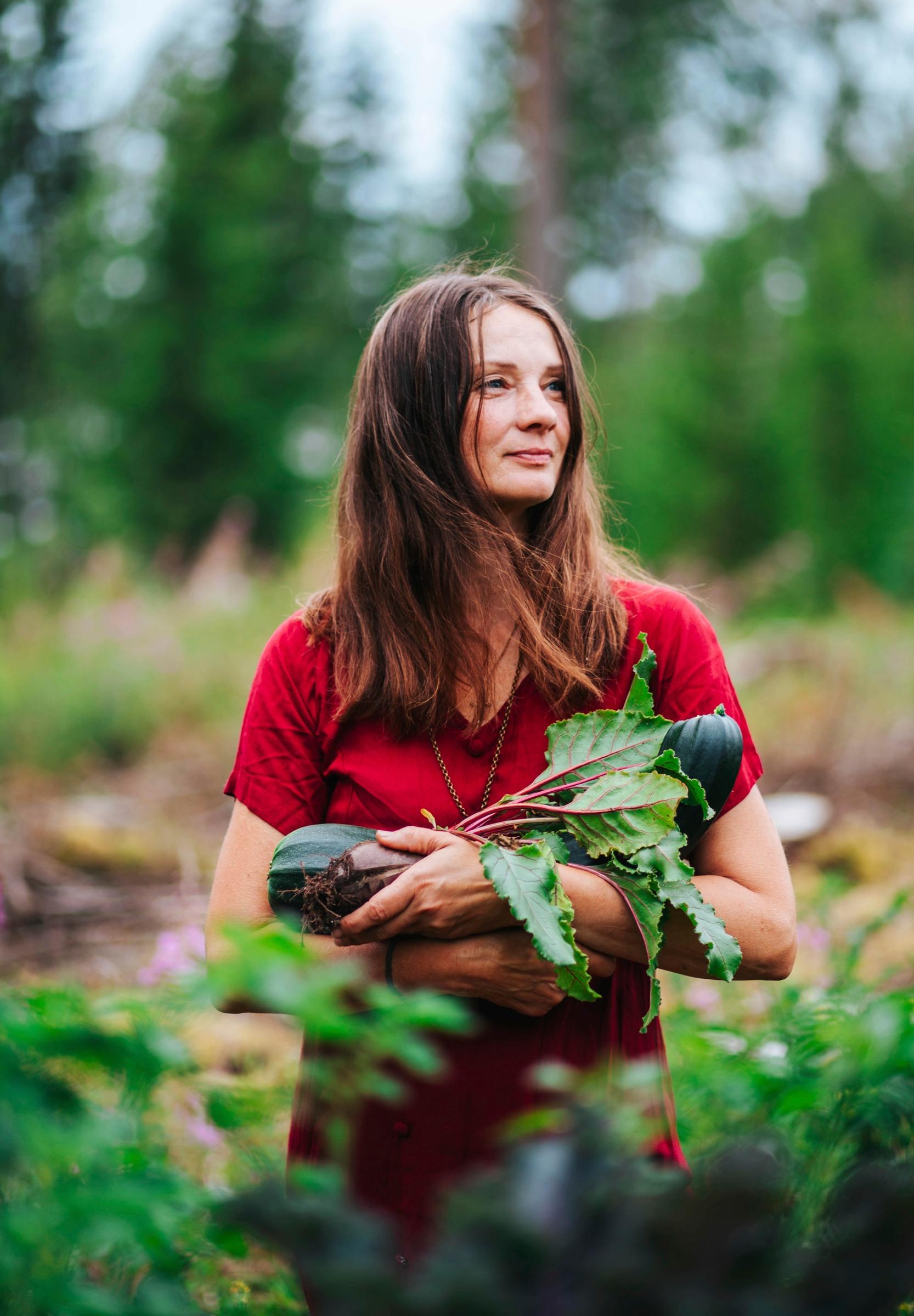

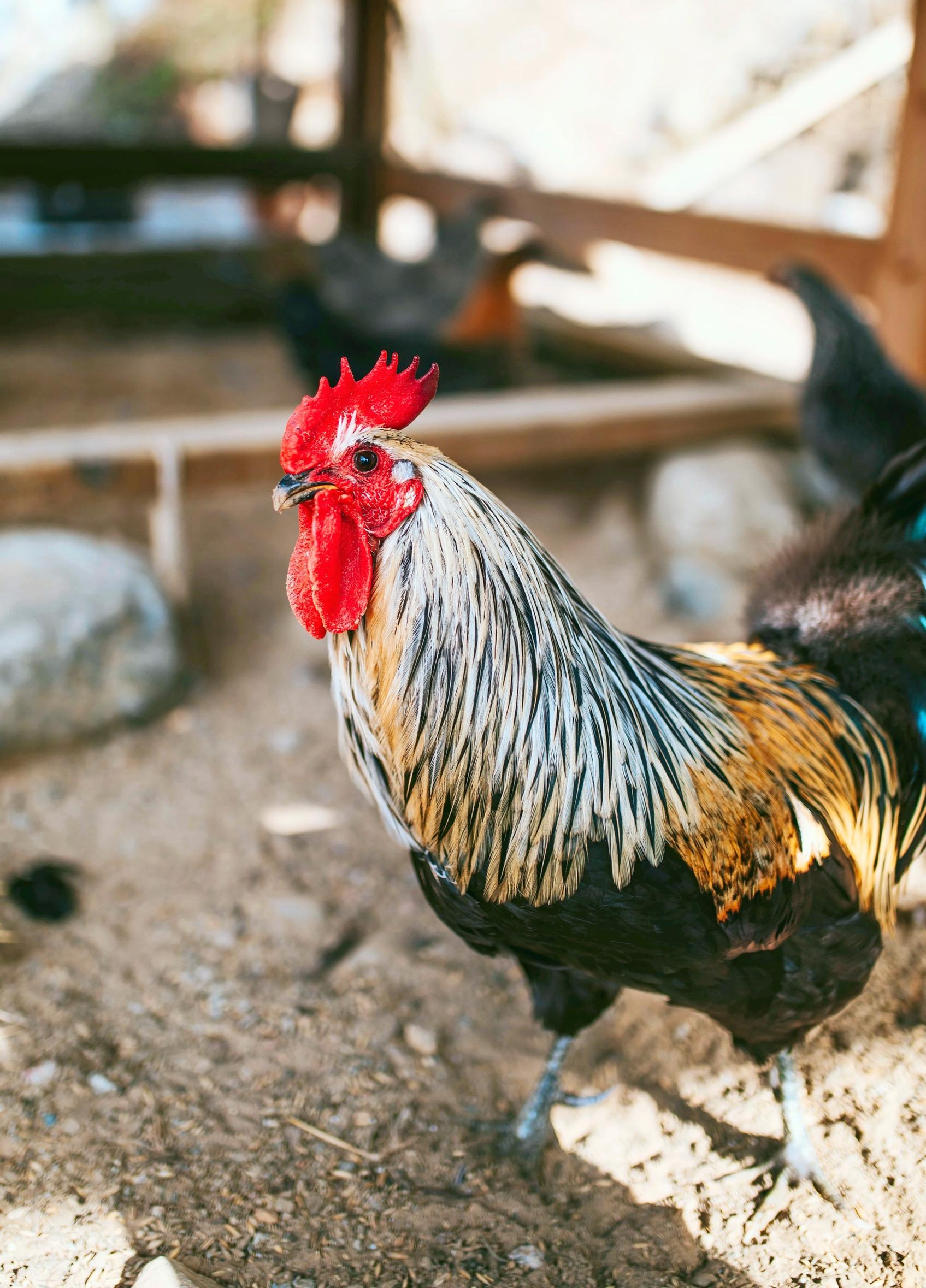
“We also have a collaboration and assistance agreement among the residents of the village.”
Every day Kirsi goes out to feed the chickens and the rooster. Eggs collect in the nests for her own use, and soon for others, too. Time slips by while she works in the yard and watches her plants thrive. Bengal cats Hippu and Neelam wander freely in and out. Kirsi clearly enjoys their tranquil company.
Kirsi shows us around her yard. It naturally provides plenty of edible plants: wild herbs, rowan berries, fireweed, wood sorrel, and birch sap. The nearby forest has blueberries, lingonberries, mushrooms, and game. Kirsi has a hunting license and is a member of the local hunting club. She fishes in the lake.
She’s built four raised bed rows in her yard, where she grows a range of vegetables and flowers for butterflies and bumblebees.
“I follow permaculture principles. That means layering fruit trees, berry bushes, climbing vines, and herbs, and at the lowest layer maybe strawberries and root vegetables.”
“I planted nettles and dandelions here. I also planted lots of flowers for pollinators. That way, we’re serving nature, not just taking from it.”
A horseshoe-shaped raised bed stands out with incredible lushness. After a dry summer, it’s surprising to see such a healthy harvest without any watering.
So, what do you still need to buy from the store with so much right here? Sugar, coffee?
“Very little. Sometimes bread, flour. I don’t use sugar. The village is a community, and so is Juva. I have a lot of friends here. Some people keep cows, so I get my milk from them. I make yogurt and fermented milk at home. People here share with each other—that’s part of the old village culture. And yes, I buy cat food from the store.”
Onnellisten kylä is Kirsi’s closest community.
“We’re like one big family, doing things together—going fishing or swimming, having board game nights. We don’t stand on ceremony.”
Here, people drop by without much notice. They just call out from the yard, ‘Hello, anybody home?’ Kirsi is usually there, unless she’s substituting as a teacher at a local school in Juva.


